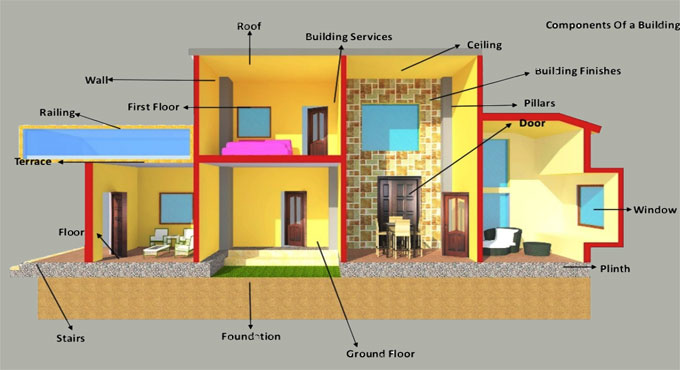NEWS | SOFTWARE | SHEET
What are the Structural Components of the Buildings?
A building or an object so as to live on its expected lifespan as well as perform the purpose what for it’s designed has to endure its self loads as well as loads applied/assigned or loads dropping in/coming over it.
With that viewpoint a chair must have adequate robust broad legs as well as persistent support and so forth. As a result, these parts of an object which bear/take the load as well as do endure/survive the object are known as that object’s structural components.
In a comparable similarity for a building that constituents are known as structural components, because of which the building carries its self loads as well as carry on for its duration/lifespan/life. Furthermore, in consideration of the aforementioned, the columns, walls, and so forth, are building’s structural components.
As per the progression of the technology various geometrical formations such as shed structure, load bearing structure, framed structure, and so forth, are generally utilized to endure the loads of various buildings. Also, the buildings’ structural components are as a result explained considering the present context.
Each and every building has analogous constituents like plinth, foundation, floors, walls, doors, roof and windows. Each constituent has its individual purpose. Those building constituents are categorized in 2 sorts: Structural Components as well as Non-structural Components.
Non structural/Non-structural components are furnishings fixtures, parapet walls, door as well as windows, tiles, paint, partitions or partition walls, and so forth.
Structural components are actually a building’s primary load bearing constituents; also all have their individual structural properties/characteristics which have to be contemplated.
Those constituents are – plinth, foundation, shear wall, wall as well as pier in superstructure, slab, floor, column, roof, beam, weather shade, staircase, as well as lintel.
Foundation: The foundation is the main structural component of a structure and several inefficiencies are perhaps because of defective foundations instead of different reason.
Also, an appropriate/proper foundation should stay in place devoid of overturning, bending, sliding or deteriorating in different manner. In order to accomplish that, the designer should ensure that the foundation, soil, as well as superstructure work jointly.
Plinth: The part of the structure amid the adjoining/surrounding ground’s surface as well as the floor’s surface, directly over the land called a plinth. Also, the surrounding ground’s level is called simply ground level or formation level as well as the building’s ground floor’s level is called a plinth level.
Wall: Walls are offered to encircle or separate the floor area in required form/outline. Also, walls offer privacy, security, and offer protection against rain, cold, sun, as well as additional weather effects. The separation of floor area differs as per the tasks needed to be carried out in the building.
Shear Wall: Shear walls are the upright/vertical structural constituent which opposes the horizontal forces such as wind, tremor/earthquake operating on a building structure. Furthermore, shear wall can even be described like a wall which is reinforced as well as made-up of braced panels to bear/carry lateral forces.
Moreover, shear wall should provide the building with lateral shear strength to oppose the wind loads, horizontal earthquake loads as well as shift those loads to the foundation.


